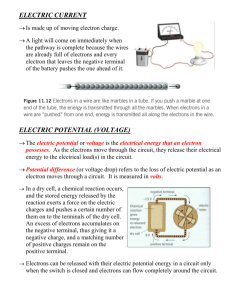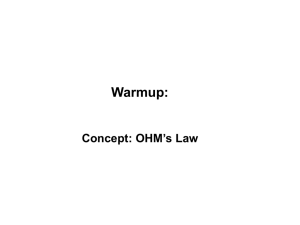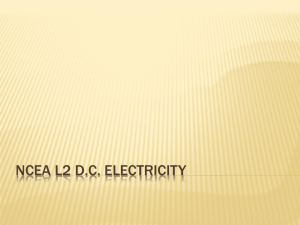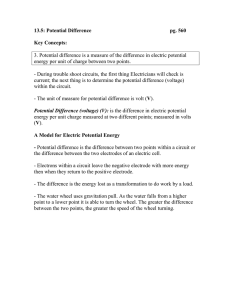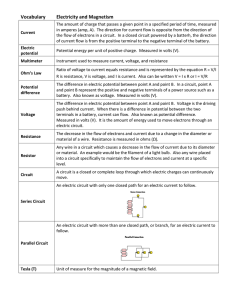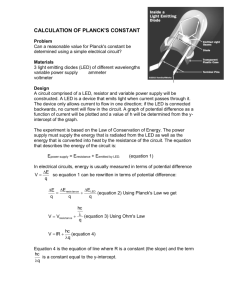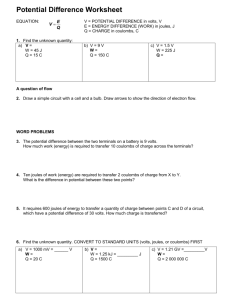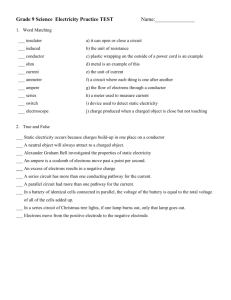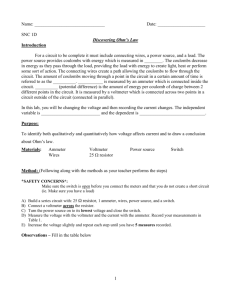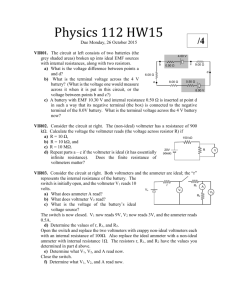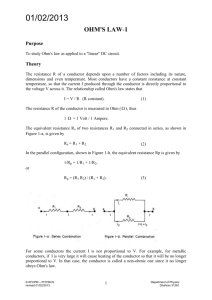SPH 3U Electricity and Magnetism Lesson Two: Electric Potential
advertisement
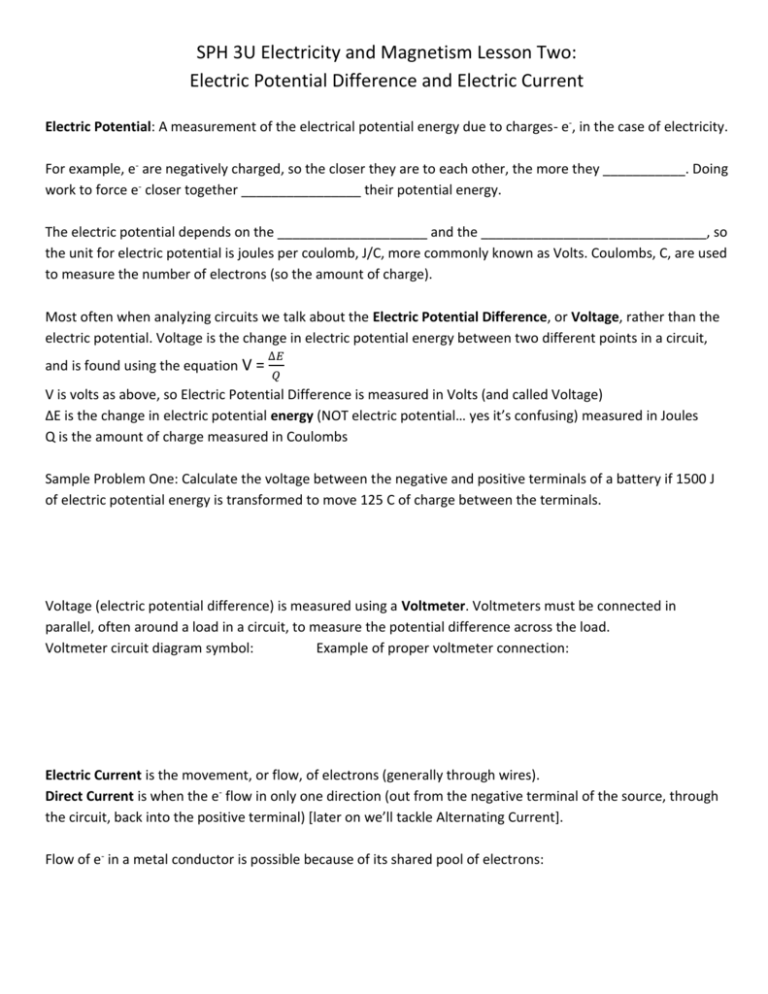
SPH 3U Electricity and Magnetism Lesson Two: Electric Potential Difference and Electric Current Electric Potential: A measurement of the electrical potential energy due to charges- e-, in the case of electricity. For example, e- are negatively charged, so the closer they are to each other, the more they ___________. Doing work to force e- closer together ________________ their potential energy. The electric potential depends on the ____________________ and the ______________________________, so the unit for electric potential is joules per coulomb, J/C, more commonly known as Volts. Coulombs, C, are used to measure the number of electrons (so the amount of charge). Most often when analyzing circuits we talk about the Electric Potential Difference, or Voltage, rather than the electric potential. Voltage is the change in electric potential energy between two different points in a circuit, and is found using the equation V = ∆𝐸 𝑄 V is volts as above, so Electric Potential Difference is measured in Volts (and called Voltage) ΔE is the change in electric potential energy (NOT electric potential… yes it’s confusing) measured in Joules Q is the amount of charge measured in Coulombs Sample Problem One: Calculate the voltage between the negative and positive terminals of a battery if 1500 J of electric potential energy is transformed to move 125 C of charge between the terminals. Voltage (electric potential difference) is measured using a Voltmeter. Voltmeters must be connected in parallel, often around a load in a circuit, to measure the potential difference across the load. Voltmeter circuit diagram symbol: Example of proper voltmeter connection: Electric Current is the movement, or flow, of electrons (generally through wires). Direct Current is when the e- flow in only one direction (out from the negative terminal of the source, through the circuit, back into the positive terminal) [later on we’ll tackle Alternating Current]. Flow of e- in a metal conductor is possible because of its shared pool of electrons: Current is represented by the symbol I, and can be calculated by the equation I= 𝑄 ∆𝑡 I is the current measured in amperes (A) [so current is symbol I measured in A] Q is again the amount of charge measured in Coloumbs (symbol Q measured in C) Δt is the same thing it always is So current is the amount of charge moving past a point in a circuit for an amount of time, just like the flow of a river would be the amount of water passing by a point in an amount of time. Notice that 1 ampere = 1 Coulomb per second ex 2) Calculate the amount of current through a wire that has 0.85 C of electrons passing a point in 2.5 min Current is measured using an Ammeter, which must be connected to the circuit in series (so that all the current will flow through it). Too much current can damage a circuit (by melting the wires). If current passes through a human body it will cause all the muscles to contract (because nerves work through electrical signals). Ammeter circuit diagram symbol: Example of proper ammeter connection: Citrus Activity: Do the activity on pg. 518 in your text Explanation: Hmwk: pg. 513 #s 1 – 4, 6 – 7 and pg. 518 #s 2 – 5



